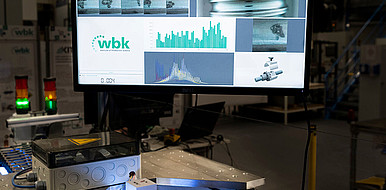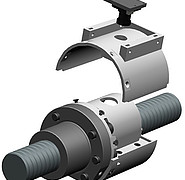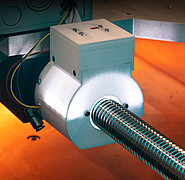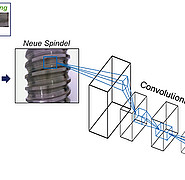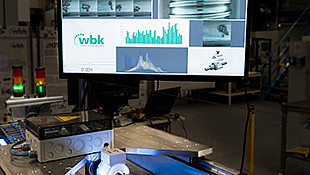Intelligent condition monitoring in production
Quality control and low downtimes are important factors for smooth production processes in many companies. Early detection of faults as well as signs of wear makes it possible to initiate suitable countermeasures such as maintenance or replacement and to avoid acute failures.
State of the art
Sound sensors, manual inspections and image-based quality assessment are the technical standard for condition monitoring in production. With so-called machine vision, predefined rules are programmed into the application for the assessment of image data. On the basis of this, the categorization between flawless and defective product takes place. If the objects to be evaluated change, the rules have to be reformulated and reprogrammed. A dynamic adaptation to changed circumstances does not take place in classical machine vision.
Technology
At the Institute for Production Engineering (wbk), scientists have developed a system that enables fully automated, intelligent image evaluation. The system is composed of a housing with an lighting system, a camera and the software with AI algorithms. The model for intelligent image evaluation is a convolutional neural network (CNN) based on machine learning methods. It first extracts image features from the images and uses an artificial neural network (ANN) to classify image data with and image data without defects (pitting/no pitting). For the specific application, the model hyperparameters are customized and image states are labeled. This allows the algorithm to perform fully automated condition monitoring.
Advantages
The intelligent camera system provides efficient condition monitoring that uses machine learning to classify conditions that are challenging even for process experts. If the algorithm detects damage, the image-based visualization allows process experts to easily assess components, making it easy to follow up on reported defect cases. Another advantage of the application lies in its flexibility, as the AI methods can also be transferred to other application areas.
Options for companies
In the application case of spindle monitoring, the system prototype achieves a 90 percent accuracy rate. KIT is looking for industrial partners to implement and further develop the system. The researchers are also providing support for the structured implementation of artificial intelligence in production.
Your contact person for this offer

Innovation Manager Mobility and Information Karlsruhe Institute of Technology (KIT)
Innovation and Relations Management (IRM) Phone: +49 721 608-28460
Email: birgit.schulze@kit.edu

